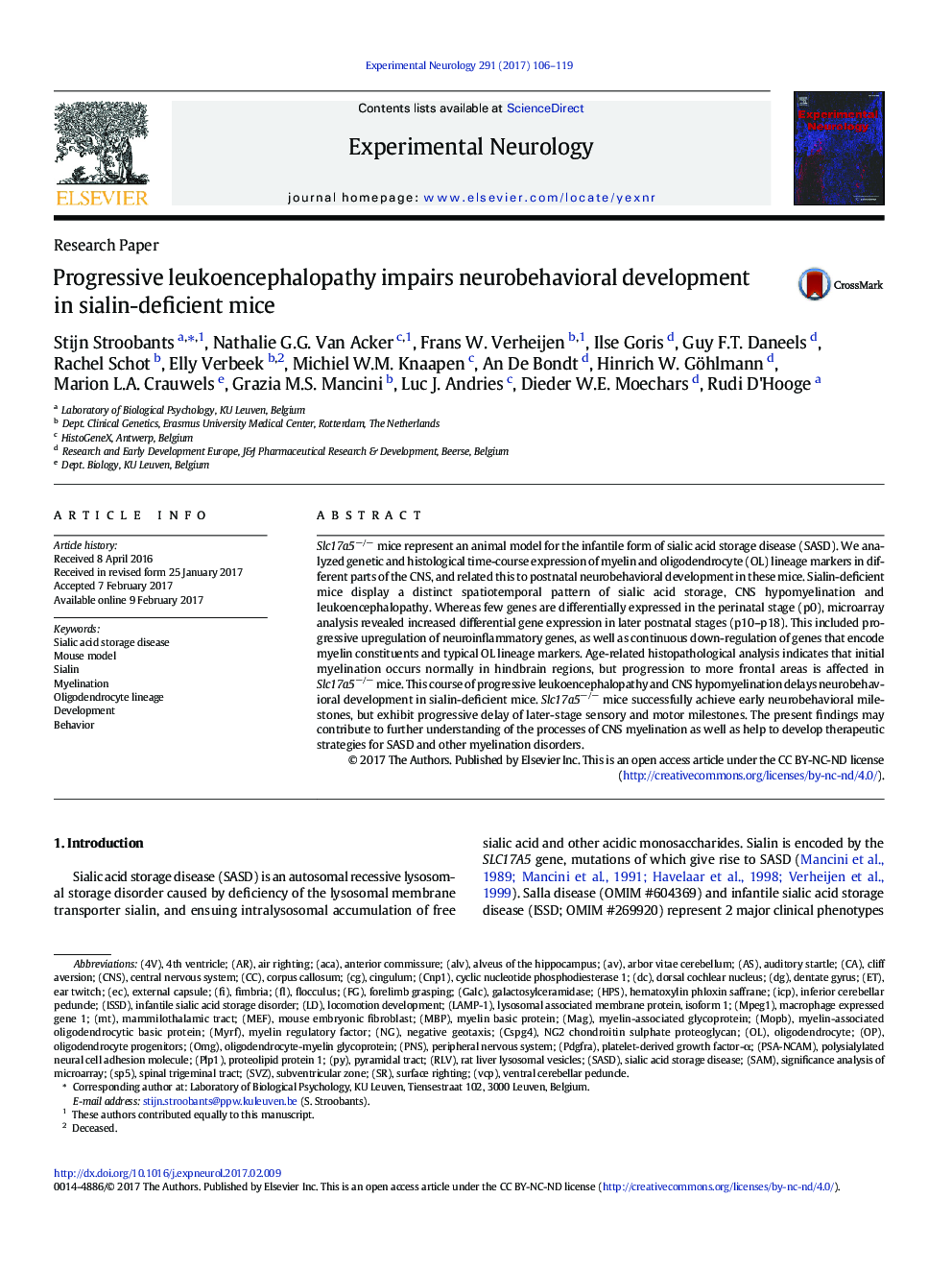| Article ID | Journal | Published Year | Pages | File Type |
|---|---|---|---|---|
| 5629325 | Experimental Neurology | 2017 | 14 Pages |
â¢Sialin-deficient mice are a valid model for human sialic acid storage disease.â¢Sialin-deficient mice show differential gene expression during brain development.â¢Sialin-deficient mice display specific spatiotemporal defects of CNS myelination.â¢Aberrant neurobehavioral development parallels their progressive leukoencephalopathy.
Slc17a5â/â mice represent an animal model for the infantile form of sialic acid storage disease (SASD). We analyzed genetic and histological time-course expression of myelin and oligodendrocyte (OL) lineage markers in different parts of the CNS, and related this to postnatal neurobehavioral development in these mice. Sialin-deficient mice display a distinct spatiotemporal pattern of sialic acid storage, CNS hypomyelination and leukoencephalopathy. Whereas few genes are differentially expressed in the perinatal stage (p0), microarray analysis revealed increased differential gene expression in later postnatal stages (p10-p18). This included progressive upregulation of neuroinflammatory genes, as well as continuous down-regulation of genes that encode myelin constituents and typical OL lineage markers. Age-related histopathological analysis indicates that initial myelination occurs normally in hindbrain regions, but progression to more frontal areas is affected in Slc17a5â/â mice. This course of progressive leukoencephalopathy and CNS hypomyelination delays neurobehavioral development in sialin-deficient mice. Slc17a5â/â mice successfully achieve early neurobehavioral milestones, but exhibit progressive delay of later-stage sensory and motor milestones. The present findings may contribute to further understanding of the processes of CNS myelination as well as help to develop therapeutic strategies for SASD and other myelination disorders.
